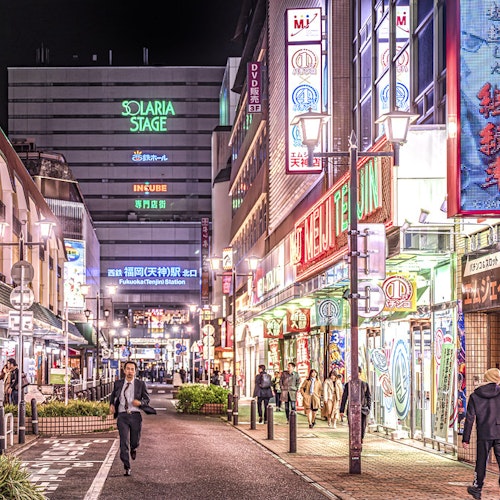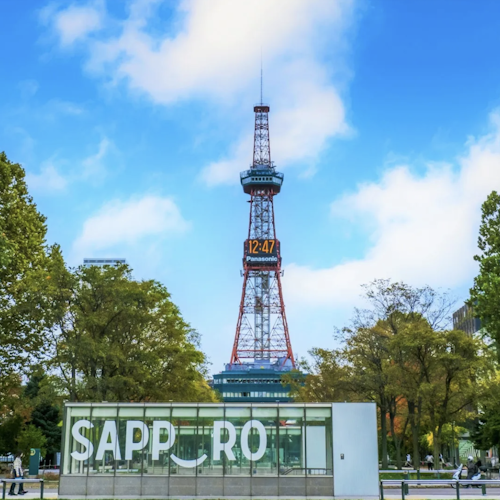
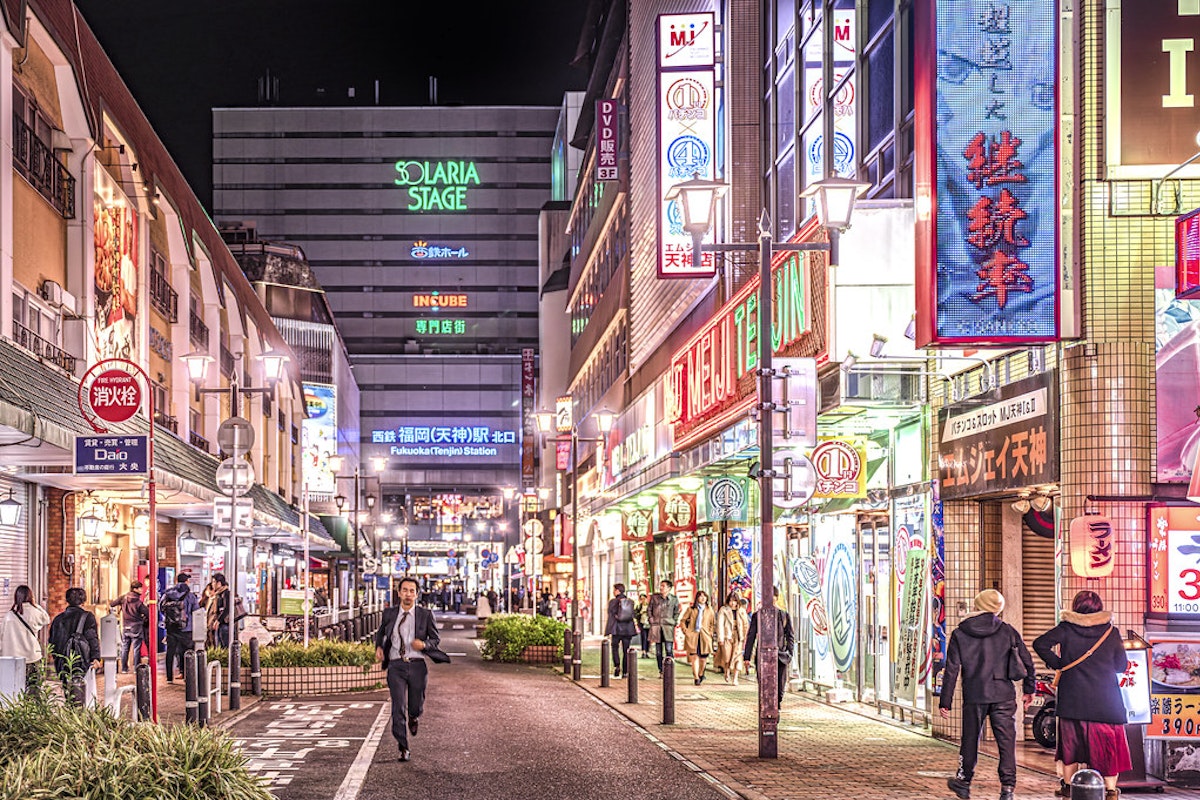
Fukuoka is Japan's sixth-largest city and the gateway to Kyushu Island. This coastal metropolis perfectly balances modern urban life with rich cultural heritage, making it one of the most accessible and enjoyable destinations for first-time visitors to Japan. With a population of 1.6 million people, Fukuoka maintains a relaxed atmosphere compared to Tokyo or Osaka while offering world-class food, historic temples, beautiful beaches, and warm hospitality.
If you're planning your first trip to Fukuoka, this guide will help you discover the best attractions in Fukuoka and make the most of your visit.

Ohori Park is a 40-hectare urban park built around a massive pond that once served as Fukuoka Castle's moat. The circular 2-kilometer path around the pond is perfect for walking, jogging, or cycling, with three small islands connected by elegant stone bridges creating beautiful photo opportunities. You can rent paddle boats for 600 yen per 30 minutes to explore the water up close.
The park transforms dramatically with the seasons. Spring brings cherry blossoms that draw huge crowds for hanami parties, summer features blooming lotus flowers, autumn displays brilliant foliage, and winter offers peaceful, minimalist scenery. It's one of the most popular places to visit in Fukuoka for both tourists and locals.
The Japanese Garden within the park charges just 250 yen for entry and showcases traditional garden design representing famous gardens across Japan. The 12,000-square-meter space includes meticulously maintained pine trees, stone lanterns, koi ponds, and tea houses where you can experience authentic tea ceremonies. Visit early morning to avoid crowds and enjoy the tranquil atmosphere.
Many Fukuoka day tours combine Ohori Park with nearby Fukuoka Castle ruins, making it efficient to see multiple attractions. Access is easy via Ohori-Koen Station on the subway Airport Line.

At 234 meters, Fukuoka Tower is Japan's tallest seaside tower and the city's most recognizable landmark. The exterior features 8,000 half-mirrors reflecting the sky and sea, creating stunning visual effects throughout the day. During special seasons, the tower lights up with beautiful illumination displays visible across the city.
The observation deck at 123 meters offers 360-degree views of Fukuoka, the surrounding mountains, and the Genkai Sea. On clear days, visibility extends to northern Kyushu's mountain ranges and distant islands. Admission costs 800 yen for adults, and the tower stays open until 10 PM, making sunset and night visits particularly spectacular.
The transformation from day to night is remarkable as you watch the sun set over the ocean and city lights gradually illuminate below. The observation level includes a café where you can enjoy drinks while taking in the views. This is one of the most romantic things to do in Fukuoka, popular with couples especially after dark.
Located in the Seaside Momochi area, combine your visit with Momochi Beach, shopping at Marizon, or the Fukuoka City Museum nearby. The area showcases Fukuoka's successful modern waterfront development.
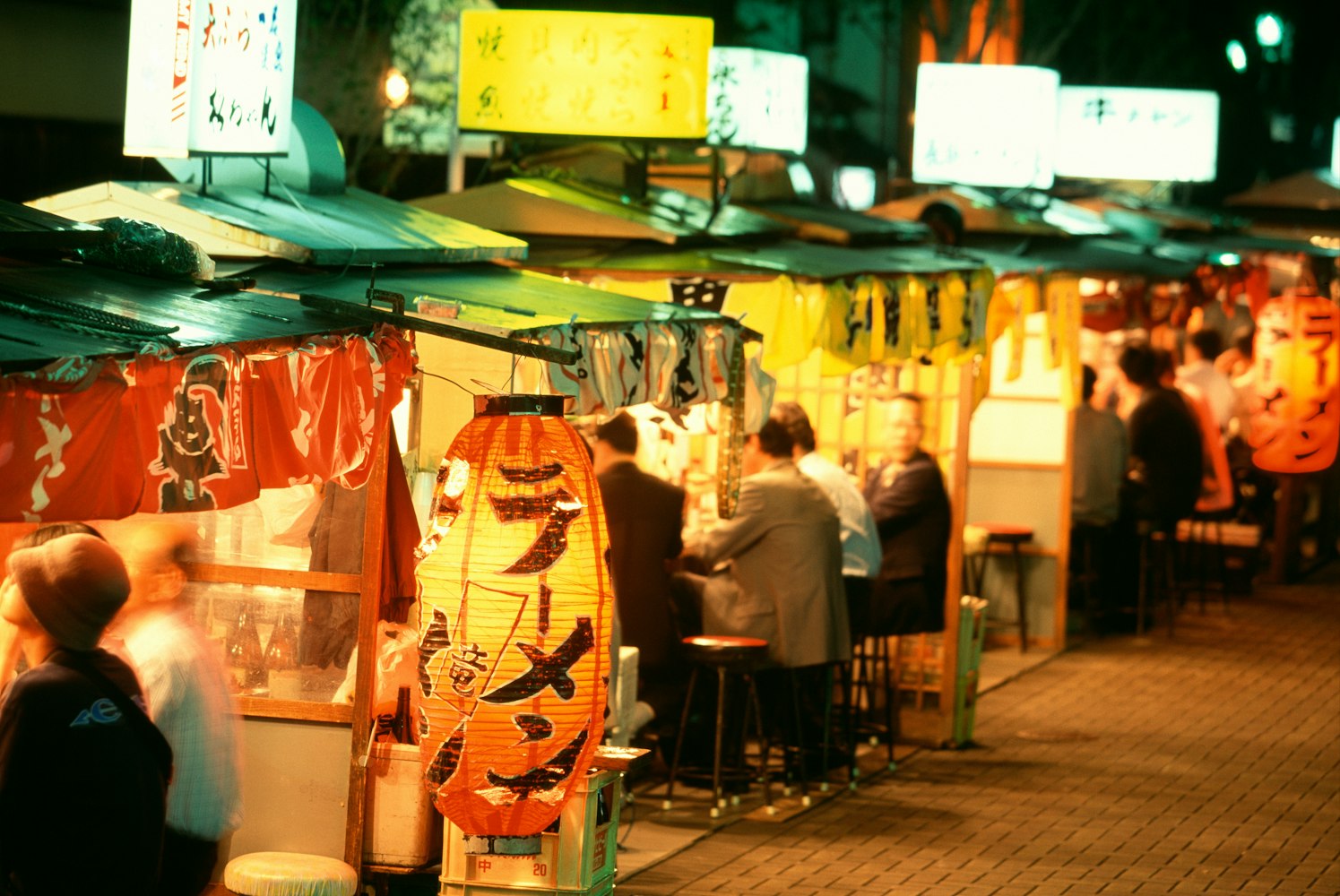
Fukuoka's yatai culture is legendary throughout Japan and one of the most unique things to do in Fukuoka. These mobile food stalls set up each evening along streets and riversides, seating only 8-10 people around small counters. The intimate setup naturally encourages conversation, and you'll find yourself chatting with locals, Japanese tourists, and international visitors in a warm, casual atmosphere.
Approximately 100 licensed yatai operate citywide, concentrated in three areas: Nakasu Island with scenic riverside views, Tenjin near downtown shopping, and Nagahama Beach with a local working-class vibe. Each area offers different atmospheres, though all deliver authentic street food experiences.
Hakata ramen is the star dish, featuring rich, creamy tonkotsu (pork bone) broth simmered for hours until milky white. The thin, firm noodles come with toppings like sliced pork, green onions, pickled ginger, and sesame seeds.
Try the "kaedama" system where you order extra noodles for just 100 yen to add to your remaining broth. Beyond ramen, yatai serve yakitori, oden, gyoza, and seasonal dishes with beer, sake, and shochu available.
Expect to spend 2,000-3,000 yen per person, including food and drinks. Yatai typically open around 6 PM and operate until midnight or later, year-round except during severe weather. Weeknights offer more authentic local experiences, while weekends get crowded with tourists. Food tours in Fukuoka often include yatai visits with guides who can recommend the best stalls and help with ordering.
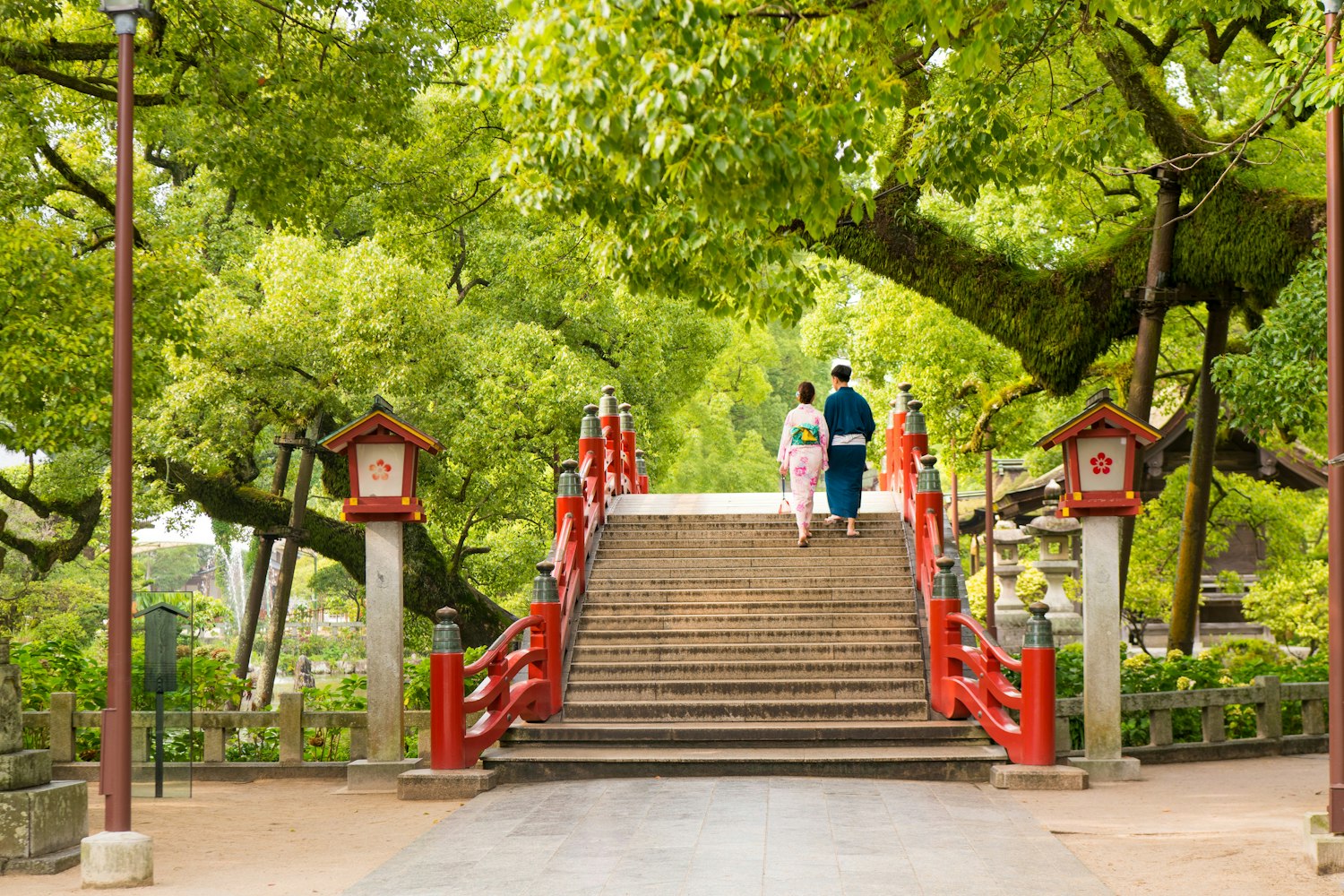
Located 30 minutes from central Fukuoka, Dazaifu Tenmangu is one of Japan's most significant shrines, dedicated to Sugawara Michizane, a 9th-century scholar who became the deity of learning and education. Students across Japan visit to pray for academic success, making it especially busy during exam seasons.
The approach to the shrine takes you through charming streets lined with shops selling umegae mochi, a local specialty of grilled sticky rice cakes filled with sweet red bean paste. The shrine grounds are beautiful year-round but particularly stunning in late February and early March when 6,000 plum trees bloom, as Sugawara Michizane famously loved plum blossoms.
The main hall showcases impressive architecture, and the grounds include smaller shrines, a sacred camphor tree over 1,000 years old, and the Treasure House displaying historical artifacts. The Kyushu National Museum sits nearby, making it easy to combine both cultural attractions in one visit.
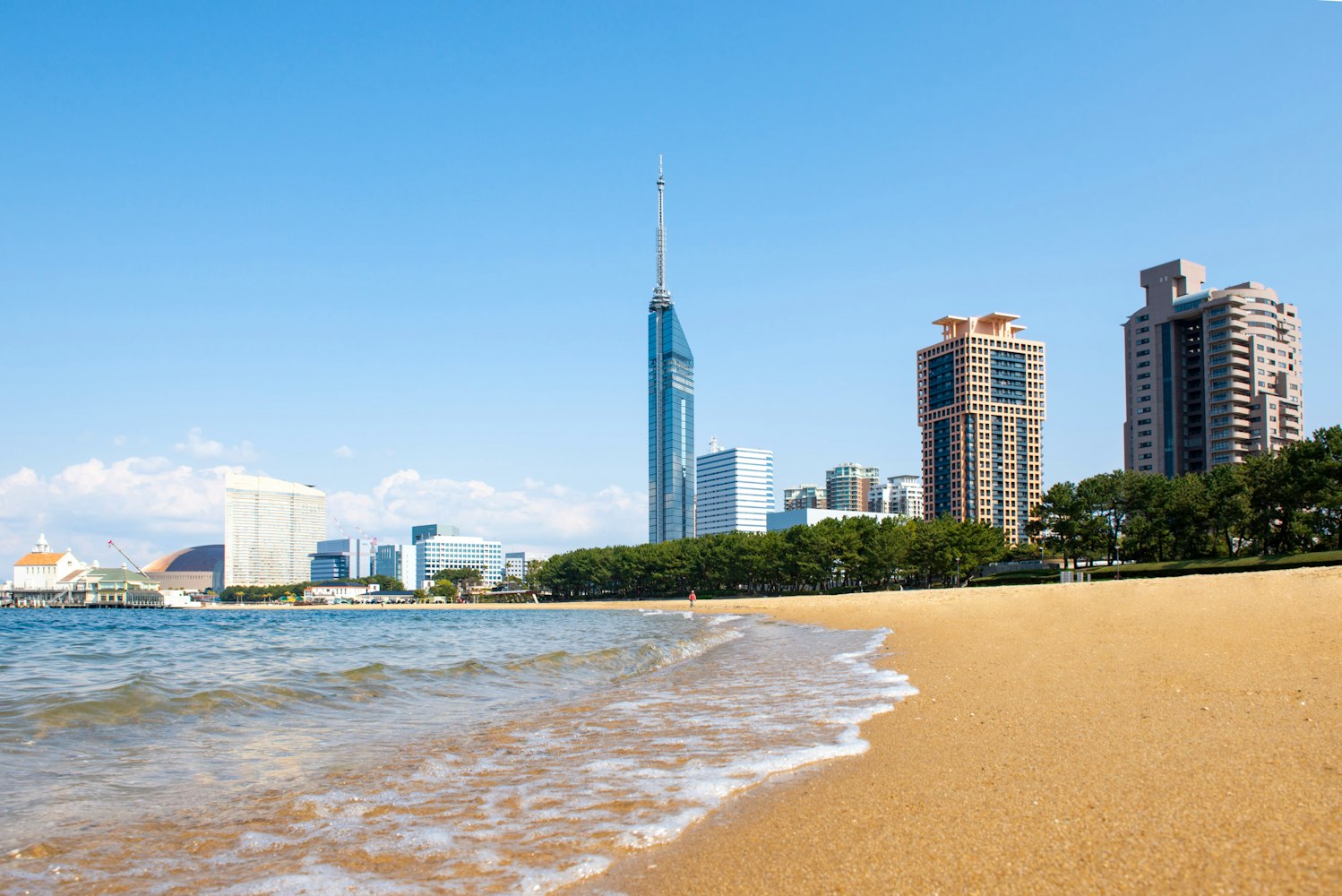
Momochi Beach (Seaside Park) stretches 2.5 kilometers along Hakata Bay and serves as Fukuoka's premier beach destination. During summer months from July through August, the wide sandy shore fills with swimmers, beach volleyball players, and water sports enthusiasts. The beach features clean facilities including showers, changing rooms, and restrooms.
Even outside swimming season, the beach remains one of the most pleasant places to visit in Fukuoka for walking, jogging, or watching sunsets over the water. The backdrop of Fukuoka Tower creates excellent photo opportunities, especially during golden hour. The promenade along the beach includes restaurants, cafes, and benches perfect for relaxing.
The surrounding Seaside Momochi area represents Fukuoka's modern face with contemporary architecture, shopping complexes, and entertainment facilities. The Marizon complex offers waterfront dining with ocean views, while nearby parks provide green spaces for picnics. The area is particularly lively on weekends when families and couples flock to enjoy the coastal atmosphere.
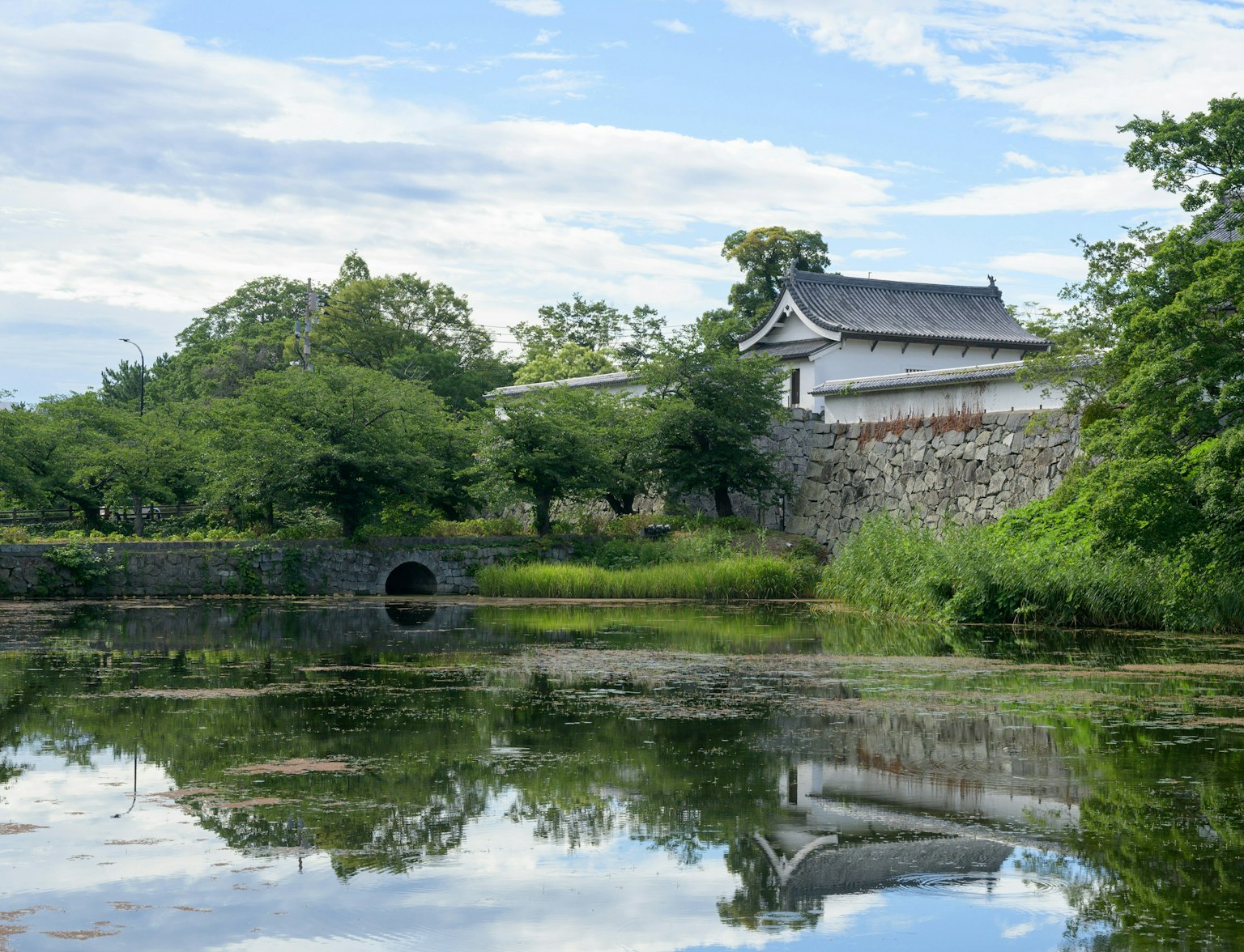
Delve into Fukuoka's rich history and vibrant culture with a professional guide on a half-day tour, exploring Ohori Park, Fukuoka Castle, and Fukuoka Tower, with all transportation included.
Tenjin is Fukuoka's bustling commercial heart, packed with department stores, shopping arcades, boutiques, restaurants, and entertainment venues. The underground shopping mall, Tenjin Chikagai, spans 590 meters with about 150 shops offering fashion, accessories, cosmetics, and food. It's perfect for rainy days or escaping summer heat while enjoying air-conditioned retail therapy.
Above ground, major department stores like Daimaru, Mitsukoshi, and Iwataya cater to different budgets from luxury brands to affordable fashion. The Tenjin Core building targets younger shoppers with trendy brands and character goods. Narrow side streets hide quirky independent shops, vintage clothing stores, and unique boutiques you won't find elsewhere.
Dining options in Tenjin are exceptional and diverse. Department store restaurant floors feature everything from casual food courts to upscale establishments. The area around Oyafuko-dori Street is known as "Ramen Stadium" with multiple famous ramen shops. Izakaya pubs, Korean restaurants, Italian bistros, and traditional Japanese dining all compete for attention in this food-lover's paradise.
At night, Tenjin transforms into an entertainment hub with countless bars, karaoke spots, and clubs. The energy is infectious, making it one of the liveliest Fukuoka attractions for experiencing the city's modern, youthful character. Whether shopping for souvenirs or seeking great food, plan to spend significant time exploring this dynamic district.
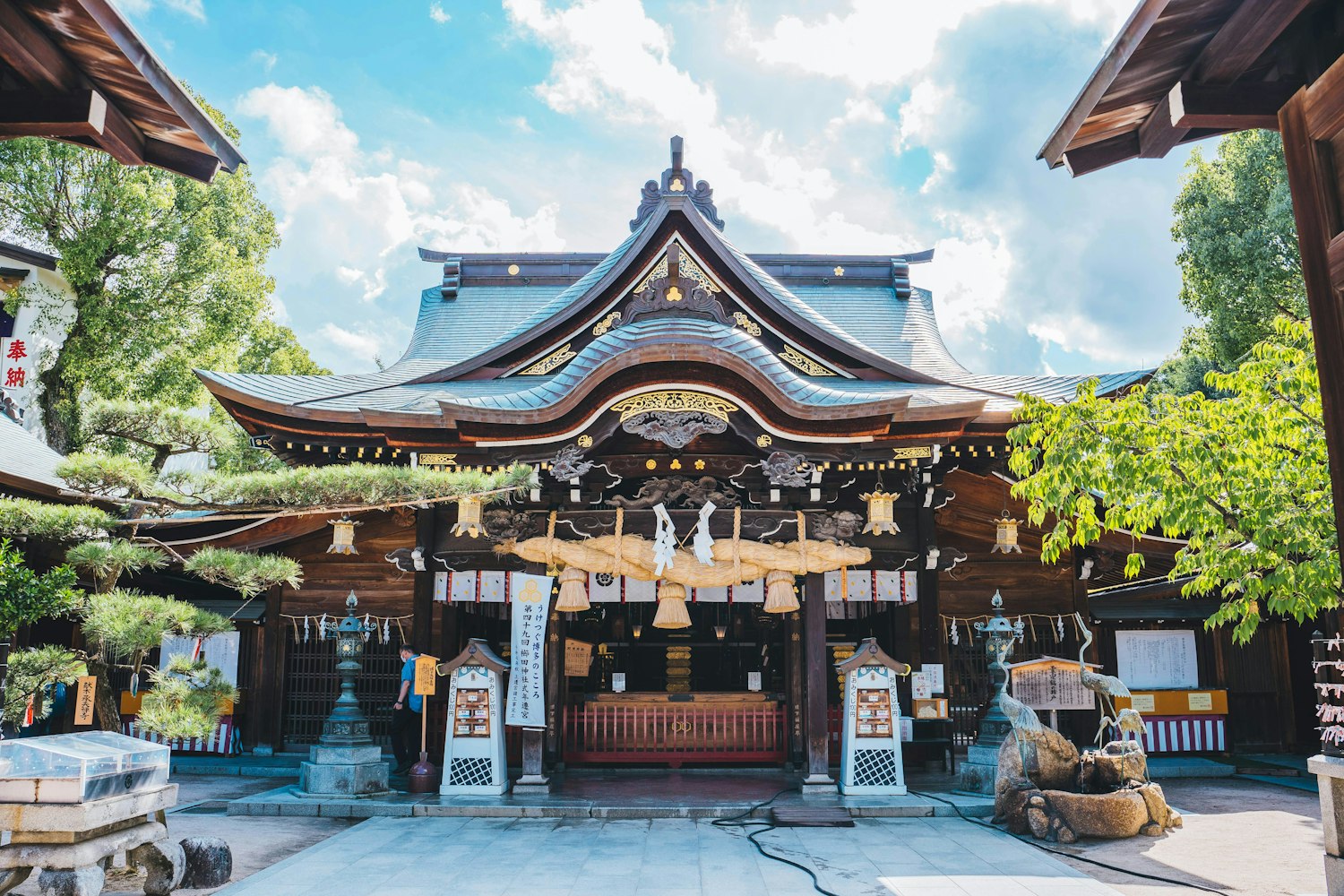
Kushida Shrine has served as Fukuoka's spiritual center for over 1,200 years, making it one of the most historically significant Fukuoka attractions. Located in the Hakata district, the shrine is most famous for hosting the Hakata Gion Yamakasa festival every July, where teams race through streets carrying massive decorated floats called kakiyama weighing nearly a ton.
Even outside festival time, the shrine displays one of these spectacular floats year-round in the main hall. Standing 15 meters tall and decorated with intricate carvings depicting legendary figures and mythical creatures, the kakiyama is impressive to see up close. The shrine's main hall features beautiful traditional architecture with detailed woodwork and colorful decorations.
The grounds include several smaller shrines dedicated to different deities, a sacred 1,000-year-old ginkgo tree, and the "Reiryo-sui" well whose water supposedly brings longevity to those who drink it. The shrine maintains a peaceful atmosphere despite being in the heart of the city, offering a spiritual respite from urban energy.
Free to enter and open daily from dawn to dusk, Kushida Shrine provides insight into local religious practices and community traditions that have continued for centuries. It's conveniently located near Canal City and other Hakata attractions, making it easy to include in your itinerary.

Canal City is an entertainment and shopping complex unlike any other attraction in Fukuoka. Built around an artificial 180-meter canal running through the center, this colorful architectural marvel combines about 250 shops, restaurants, a theater, cinemas, two hotels, and even office space in a uniquely designed vertical mall.
The complex's design by American architect Jon Jerde features winding pathways, multiple levels, bridges crossing the canal, and vibrant colors throughout. The canal itself becomes a stage for regular fountain shows synchronized with music and lights, happening multiple times daily. Evening shows are particularly impressive when the entire complex lights up.
Shopping ranges from international fashion brands to Japanese character goods stores, electronics shops, and souvenir boutiques. The restaurant selection spans from budget food courts to upscale dining, covering Japanese, Korean, Chinese, Western, and fusion cuisines. Ramen Stadium on the fifth floor features multiple famous ramen shops from across Kyushu, letting you compare regional styles.
Canal City serves as both a practical shopping destination and an attraction itself due to its unique architecture and lively atmosphere. It's especially popular with families and makes an excellent rainy-day option since most areas are covered or indoors.
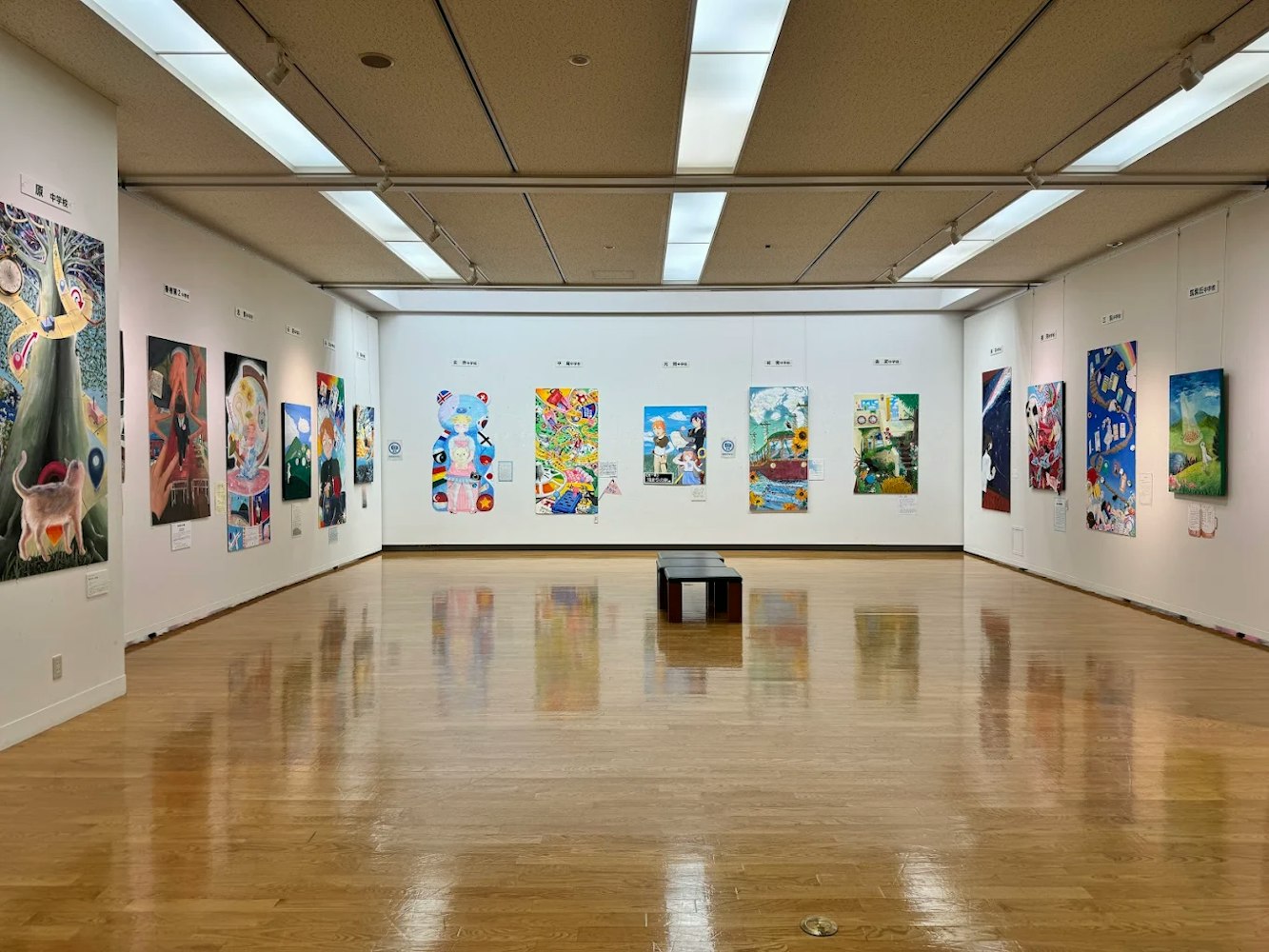
The Fukuoka Asian Art Museum is the world's only museum dedicated exclusively to modern and contemporary Asian art. Located on the seventh and eighth floors of the Hakata Riverain complex, the museum houses over 3,000 works from 23 countries and regions across Asia, making it one of the most culturally significant places to see in Fukuoka.
What distinguishes this museum is its focus on contemporary Asian artists and movements often overlooked by Western art institutions. The collection includes paintings, sculptures, photographs, and installations that show how Asian artists have engaged with modernization, globalization, and traditional culture. Exhibitions rotate regularly, ensuring repeat visitors always find something new.
The museum runs unique artist residency programs, bringing Asian artists to Fukuoka for several months to create new work and engage with the local community through workshops and talks. This living approach to art makes the museum dynamic rather than simply preserving historical works. The programs have fostered artistic exchange and dialogue across Asian cultures for decades.
Admission costs 200 yen for the permanent collection, with special exhibitions priced separately. English explanations are available for major works. The museum shop sells catalogs, art books, and unique items created by resident artists.

Maizuru Park occupies the site of Fukuoka Castle, built in the early 1600s by feudal lord Kuroda Nagamasa. While most structures were dismantled during the Meiji Restoration when feudal systems ended, several impressive gates, turrets, and massive stone walls remain, offering glimpses into Japan's feudal past.
The Tamon Yagura turret and Shiomi Yagura watchtower have been restored and occasionally open to the public, displaying historical materials about the castle and samurai life. The stone walls themselves are remarkable examples of castle-building techniques, with some stones weighing several tons fitted together without mortar. Climbing to higher areas of the ruins provides nice views over modern Fukuoka and Hakata Bay.
The park is renowned for cherry blossoms, with approximately 1,000 cherry trees blooming each spring typically from late March to early April. During cherry blossom season, the park hosts evening illumination events where trees are lit up after dark, creating magical scenes with the historic stone walls as backdrop. The Fukuoka Castle Cherry Blossom Festival attracts huge crowds but remains one of the best things to do in Fukuoka during spring.
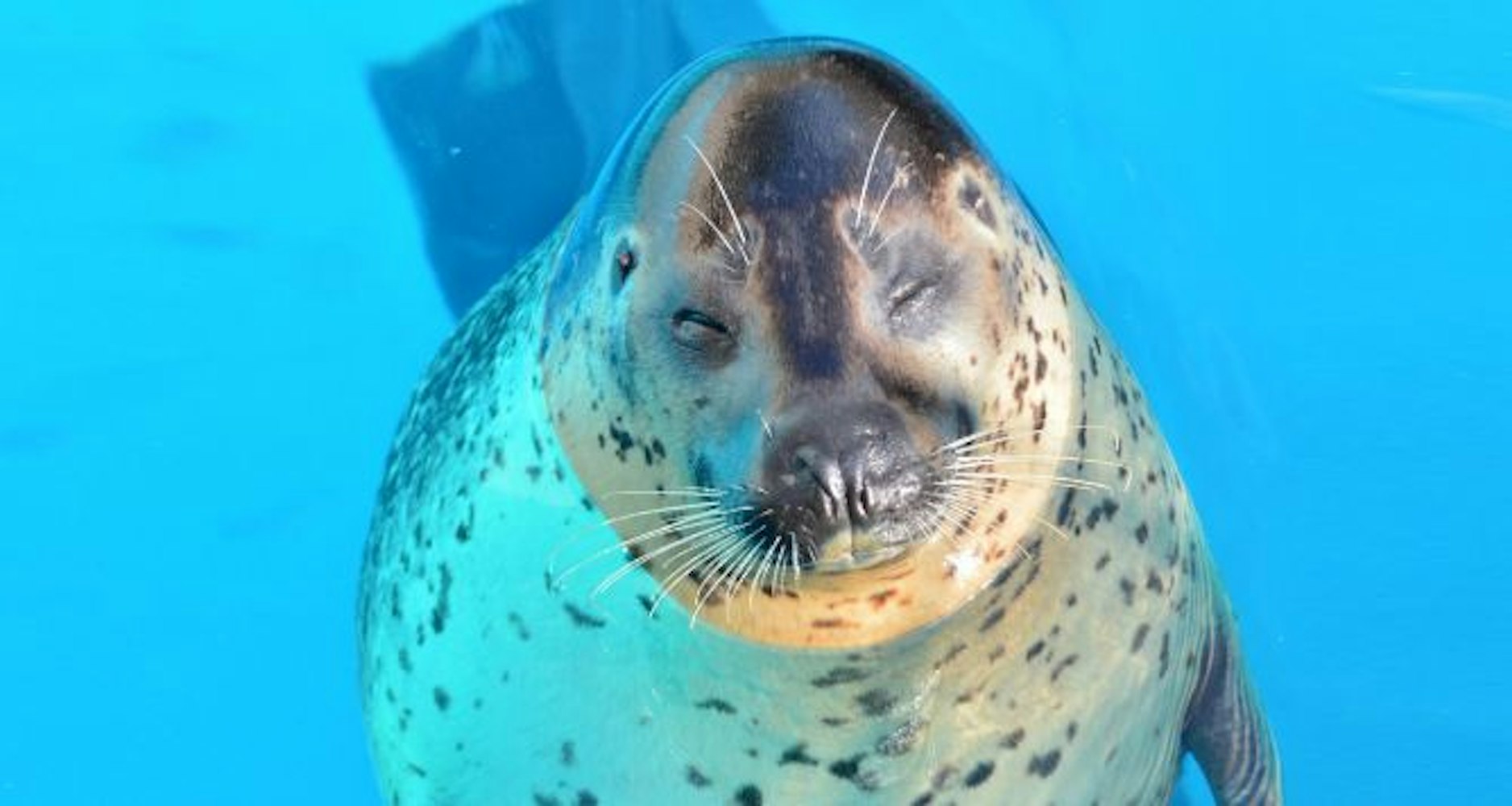
Marine World Uminonakamichi is Fukuoka's premier aquarium, showcasing marine life from the surrounding seas with a particular focus on the Kuroshio Current ecosystem. The facility houses over 30,000 creatures representing 450 species in thoughtfully designed exhibits that prioritize both education and visual impact.
The centerpiece is a massive panoramic tank holding 2.4 million liters of water, allowing visitors to observe sharks, rays, and schools of fish from multiple viewing angles. The tank's design creates an immersive experience, making you feel like you're walking on the ocean floor. The dolphin and sea lion shows in the Marine Theater are entertaining and educational, demonstrating natural behaviors and the animals' intelligence while trainers explain conservation messages.
Special exhibits include a mesmerizing jellyfish corner with tanks illuminated to highlight their graceful movements, a touch pool where you can interact with starfish and sea cucumbers, and an otter exhibit showcasing these playful creatures. The penguins and sea otters are particularly popular with families and photographers.
Located within the larger Uminonakamichi Seaside Park on a peninsula across Hakata Bay, you can combine your aquarium visit with the park's beaches, flower gardens, amusement rides, and cycling paths. Access requires a 30-minute ferry ride from central Fukuoka or train to Uminonakamichi Station. This is one of the best things to do in Fukuoka with children, though adults will appreciate the quality exhibits and beautiful setting.

Nakasu is Fukuoka's famous entertainment district, located on a narrow island between the Naka River and Hakata River in the heart of the city. With approximately 3,500 bars, restaurants, and clubs packed into just 0.25 square kilometers, it's one of Japan's most concentrated nightlife areas and rivals Tokyo's Kabukicho or Osaka's Dotonbori in energy and variety.
The district comes alive after dark when neon signs illuminate the streets and reflect beautifully on the rivers on both sides. The riverside location gives Nakasu a unique atmosphere different from other Japanese entertainment districts. Walking along the riverbanks at night, especially on the paths lined with yatai food stalls, offers romantic views of the illuminated buildings and their reflections dancing on the water.
Entertainment options range from casual izakaya pubs serving food and drinks to upscale hostess clubs, from lively sports bars to intimate jazz clubs. The area caters to diverse tastes and budgets, though some establishments target exclusively Japanese businessmen with expense accounts. The streets closer to the river and yatai areas are more tourist-friendly and accessible.
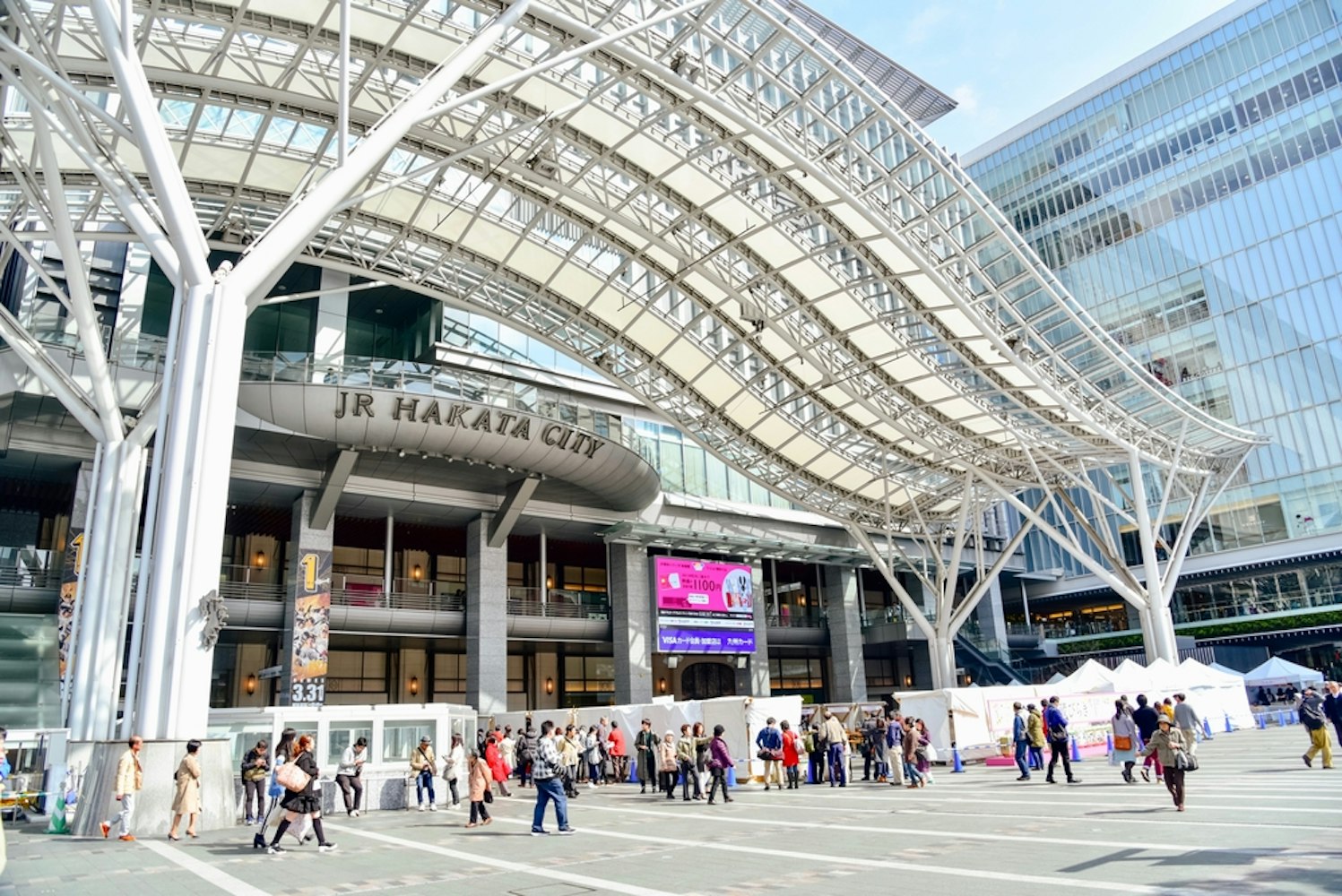
Hakata Station isn't just a transportation hub; it's a massive shopping and dining destination in its own right. JR Hakata City, the complex integrated with the station, spans multiple floors with hundreds of shops and restaurants, making it one of the most comprehensive places to visit in Fukuoka for retail therapy and dining.
The underground area connects seamlessly to subway lines and underground shopping streets, creating a vast climate-controlled network perfect for rainy days or hot summers. The Amu Plaza Hakata section features fashion brands, cosmetics, electronics, and character goods stores. The Hankyu Department Store offers more upscale shopping with luxury brands and high-end goods.
Dining options are exceptional, particularly on the 9th and 10th floors, where the restaurant district features over 60 establishments representing cuisines from across Japan and around the world. The "Tsubame no Mori Hiroba" rooftop garden on the 10th floor provides a free green space with surprising views of the city and passing trains, popular for relaxing between shopping sessions.
The station's underground souvenir area is perfect for last-minute gift shopping before departing Fukuoka. You'll find Hakata specialties like mentaiko (spicy cod roe), karashi mentaiko (spicy marinated cod roe), Hakata torimon (sweet bean-filled cake), and traditional Hakata dolls.

This compact museum in the Gion area recreates life in old Hakata through a beautifully preserved machiya (traditional townhouse) from the Meiji era. The museum displays Hakata's famous traditional crafts, including Hakata-ori silk textiles, Hakata dolls (ningyo), and Hakata gion yamakasa festival floats and decorations.
What makes this museum special is its interactive approach. You can try on traditional Hakata costumes for photos, watch craftspeople demonstrate traditional techniques like doll-making and textile weaving, and participate in hands-on workshops creating local crafts. During certain times, traditional performances, including Hakata niwaka comedy skits and folk songs, take place in the museum's small theater space.
The building itself is historically valuable, showcasing traditional architectural features like tatami mat rooms, sliding shoji doors, inner gardens, and merchant family living quarters. Walking through the narrow rooms and hallways gives you a tangible sense of daily life during the Meiji and Taisho periods before modern development transformed Hakata.
Admission costs just 200 yen, and the museum is open daily except Mondays. Located near Kushida Shrine and within walking distance from Canal City, it's easy to include in your Hakata district exploration.
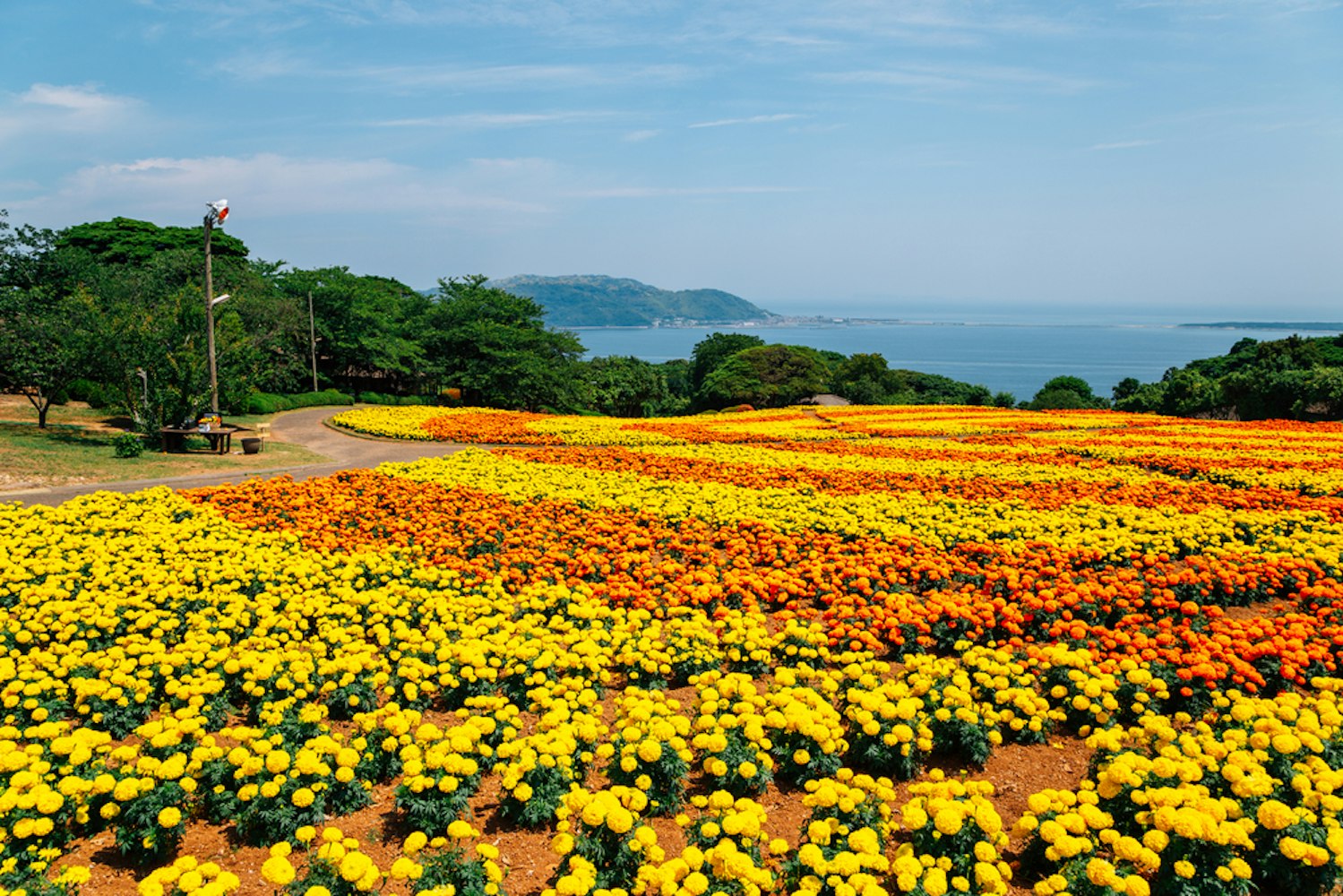
Just a 10-minute ferry ride from Meinohama Port in western Fukuoka, Nokonoshima Island feels worlds away from urban life. This small circular island spanning only 12 kilometers in circumference is known for seasonal flower fields, hiking trails, quiet beaches, and a refreshingly slow pace that contrasts sharply with mainland Fukuoka.
Nokonoshima Island Park covers the island's central hills with spectacular flower displays changing throughout the year. Spring brings rapeseed flowers (nanohana) creating brilliant yellow carpets, summer features sunflowers, autumn showcases cosmos flowers in pink and white, and winter displays narcissus. The elevated flower fields provide stunning views over the sea with Fukuoka's skyline visible in the distance.
You can explore the island by renting bicycles near the ferry terminal for about 500 yen per day, or take a local bus connecting the port to the island park. Small beaches around the island are quiet and perfect for peaceful seaside walks. Several restaurants serve fresh seafood and vegetables grown on the island, with some offering BBQ areas where you can grill your own food.
The island attracts far fewer tourists than mainland Fukuoka attractions, offering authentic island life experiences and nature immersion. It's particularly popular with families and photographers. Some Fukuoka tours include Nokonoshima as part of island-hopping itineraries around the area.
Fukuoka is compact and easy to navigate. The subway system has three lines connecting major attractions, and the Nishitetsu bus network covers the entire city. Many places to see in Fukuoka are within walking distance of each other, especially in the Tenjin and Hakata areas.
For first-time visitors, buying a one-day pass for the subway can save money if you're planning to visit multiple attractions in Fukuoka. Taxis are also readily available and affordable for short distances. If you're visiting multiple cities in Kyushu, consider joining organized tours that handle transportation and provide local insights.
